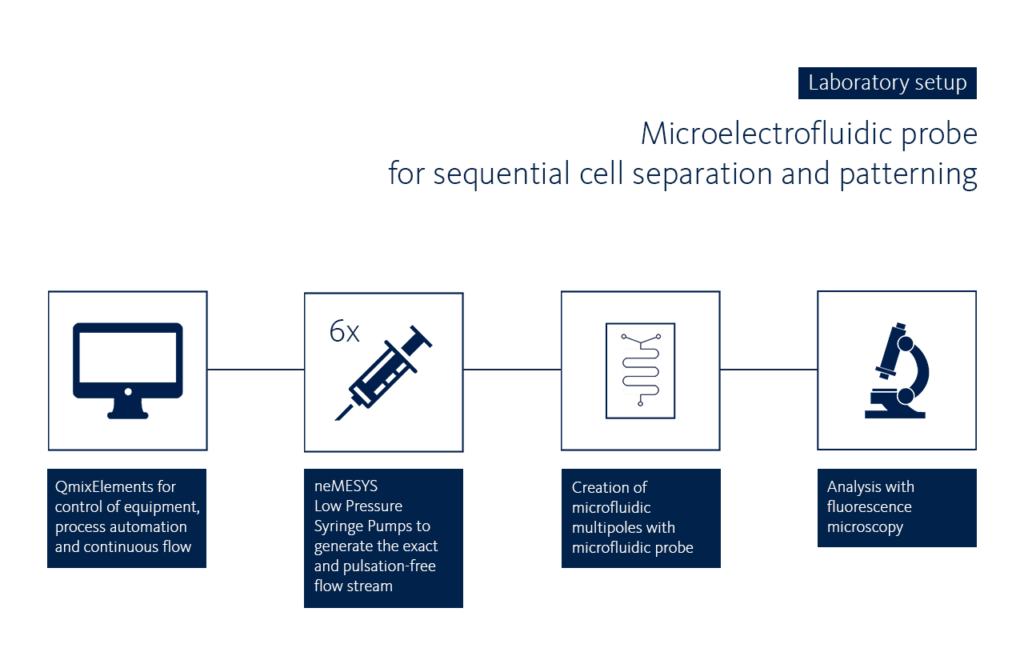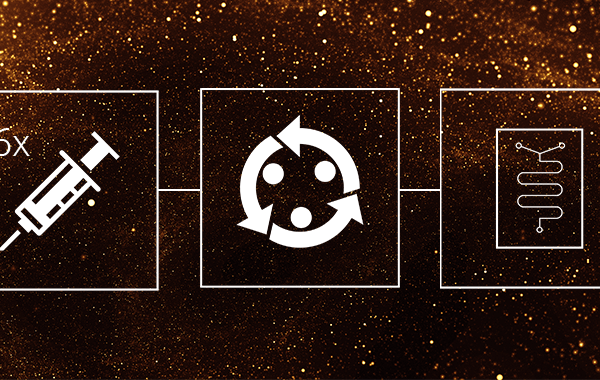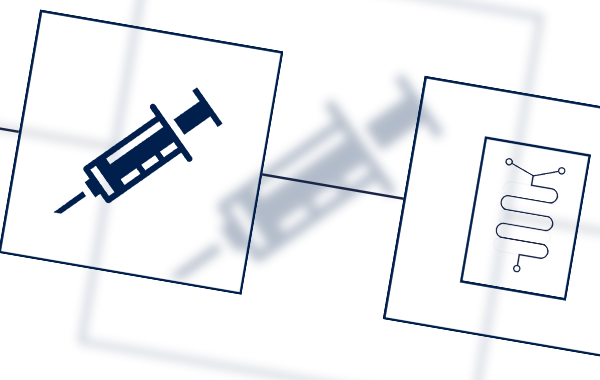In their latest publication, a team from the laboratory of Mohammad A. Qasaimeh, at New York University Abu Dhabi, set a new milestone for open space microfluidics in the field of cell biology. The researchers developed a new kind of open-space microfluidic system for the sequential cell separation and patterning based on dielectrophoresis, and are able to reach a cell purity of ~90 %.
The syringe pumps were used to generate flow from the injection to aspiration aperture of their device, in order to generate a hydrodynamic flow confinement within which cell separation occurred.
Laboratory Setup:
For the research work it was necessary to use specially developed and 3D-printed microfluidic chips. Based on the Hele-Shaw-cell approximation, the flow was generated between two parallel flat plates by simultaneous injection and aspiration of fluids from the microelectrofluidic probe. Dielectrophoresis forces were then used to isolate target cells out of the flow stream and sequentially pattern them on the bottom substrate. Based on this method, cell purity of up to ~90 % was reached, characterized by fluorescence microscopy.
With their publication in Lab on a Chip last year, Qasaimeh et al. provide new tools to separate specific cells from heterogeneous cell population without need of any microchannels and have thus laid important foundations for this field of research.
 Laboratory setup cell separation
Laboratory setup cell separation
The setup for the investigation of open space microfluidics for cell separation could be realized with a modular and high-precision CETONI dosing system. In order to generate continuous multipoles to separate cells with a high isolation efficiency, an extremely uniform and pulsation-free fluid flow is required. The nemesys precision syringe pumps are ideally suited for precise and smooth dosing of smallest fluid quantities. Thanks to its modularity, the setup can also be extended at any time, giving the research team complete flexibility in their work.
Used CETONI devices:
- Base 120
- 6x CETONI nemesys Low Pressure Syringe Pumps 290N
Literature:
A. T. Brimmo, A. Menacherya, M. A. Qasaimeh: Microelectrofluidic probe for sequential cell separation and patterning. 2019, (19), 4052-4063. DOI: 10.1039/C9LC00748B






